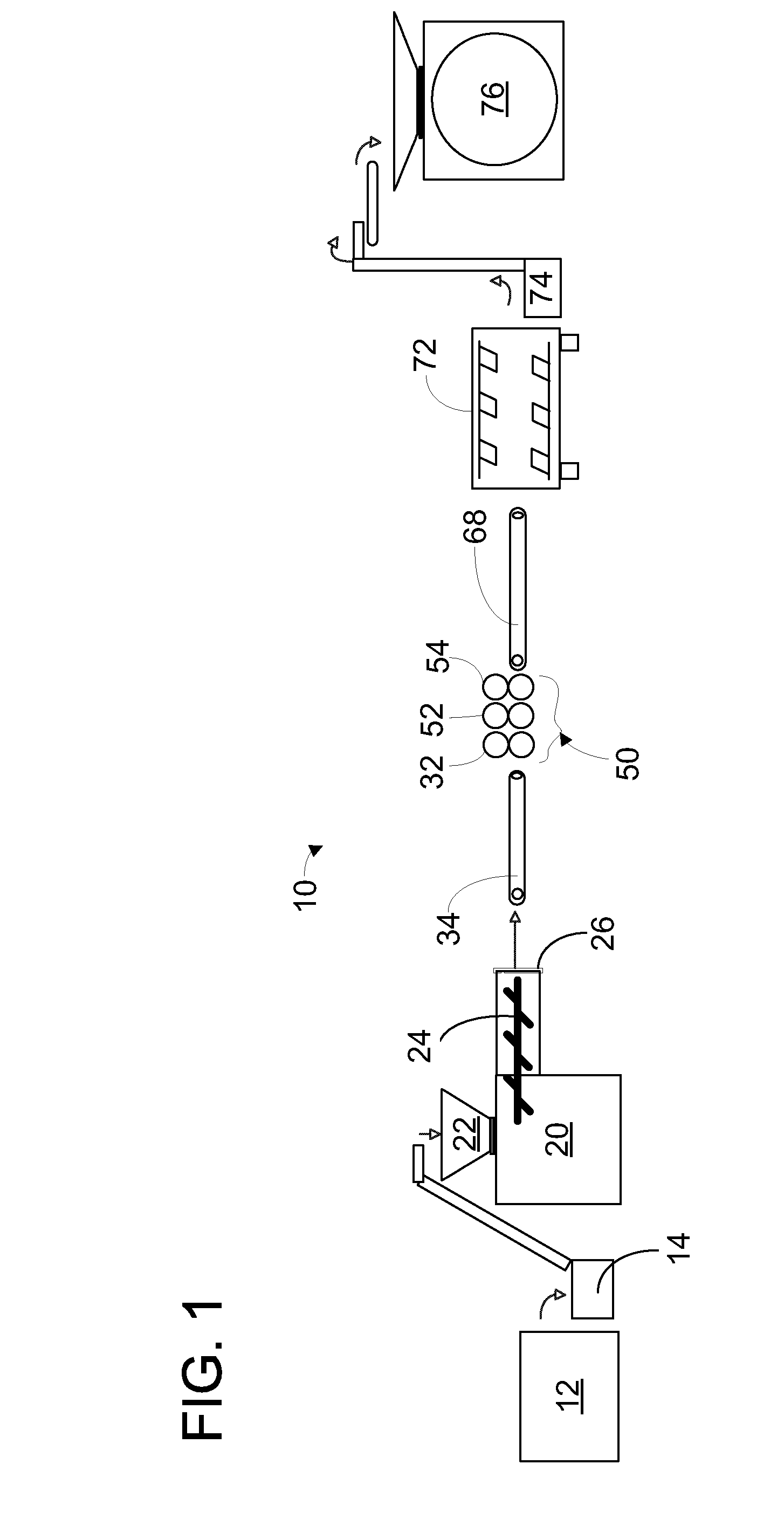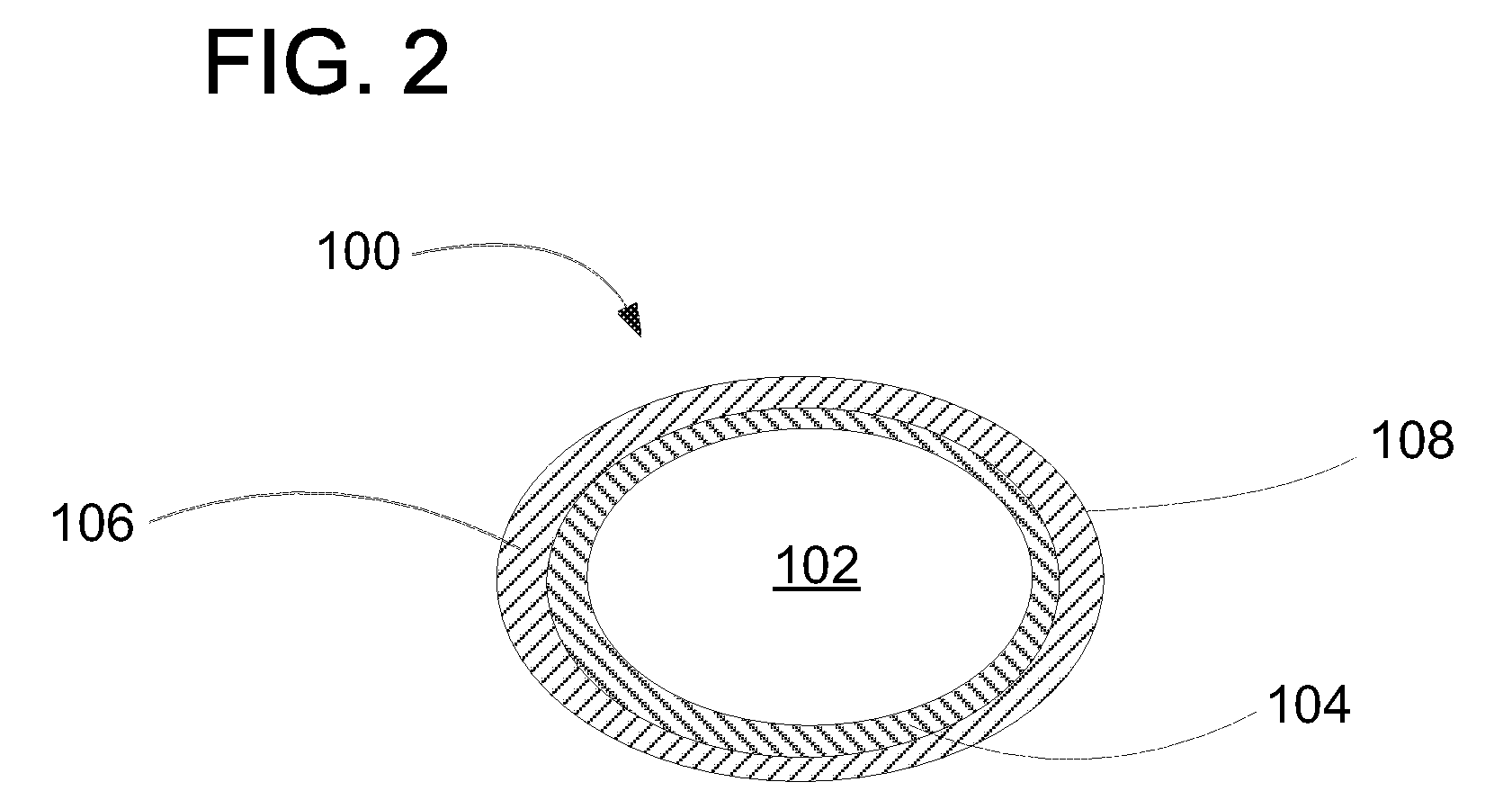Probiotic chewing gum method of manufacture
a chewing gum and probiotic technology, applied in the field of confectionery materials, can solve the problems of probiotic metabolizing available nutrients, affecting the quality of chewing gum, and affecting the shelf life of chewing gum products,
- Summary
- Abstract
- Description
- Claims
- Application Information
AI Technical Summary
Benefits of technology
Problems solved by technology
Method used
Image
Examples
example 1
Determination of Probiotic Survival in Extruded Gums Containing Various Bulking Agents and with Various Packaging
[0065]Seven gum compositions were prepared by mixing the various components at a temperature of about 55° C. The components of the gum and the percent inclusion of each component are shown in Table 1 below. The probiotic pre-blend included a 9 to 1 mass ratio of sorbitol to lactobacillus plantarum 299V.
TABLE 1Percent Inclusion by Weight of Various Componentsof the Gums Tested in Example 1Component (%)Run 1Run 2Run 3Run 4Run 5Run 6Run 7Alpha Sorbitol70.09000000Erithritol070.0900000Isomalt0070.090000Maltitol00070.09000Mannitol000070.0900Xylitol0000070.0970.09Gum Base -2626262626026Calcium CarbonateGum Base - Talc00000260Probiotic Pre-blend0.830.830.830.830.830.830.83Encapsulated0.70.70.70.70.70.70.7AcesulfamepotassiumAcesulfame0.030.030.030.030.030.030.03potassium(unencapsulated)Encapsulated0.50.50.50.50.50.50.5AspartameSpearmint Oil1.851.851.851.851.851.851.85
[0066]The var...
example 2
Preparation of a Probiotic-Containing Extruded Chewing Gum
[0069]Three batches of chewing gum containing probiotics were mixed weighing approximately 485 kg each. Run 1 contained probiotics added to deliver a theoretical initial loading of 5.0×106 CFU / serving. Run 2 contained probiotics added to deliver a theoretical initial loading 5.0×107 CFU / serving. Run 3 contained probiotics added to deliver a theoretical initial loading 1.0×108 CFU / serving.
[0070]The three batches included a probiotic pre-blend of alpha sorbitol and a probiotic, lactobacillus plantarum 299V (Probi AB, Lund, Sweden) in a 9:1 ratio. The addition of sorbitol to the probiotic assisted in bulking up the probiotic for addition to the batch mixer and also to dry out the probiotic which had been previously refrigerated.
[0071]The batches were mixed by first adding gum base to a batch mixer. Next, bulking agents or polyols were added to the mixer after 6 minutes. After another 1 minute, mint oil was added. After another 7...
example 3
Determination of the Effect of Mixing Time on Probiotic Survival
[0072]A compressed gum containing probiotics was prepared in two runs and the mixing time was varied for each run. In the first trial, the four different formulations shown in Table 7 were prepared. Portions of each formulation were placed in different types of packaging, including blister packaging, a bottle with a desiccant present in the bottle, a bottle without any desiccant present, and a tube.
TABLE 7Formulations Produced in the First TrialFormulation 1Formulation 2Formulation 3Formulation 4BaseAll In-Gum -All In-Gum -All In-Gum -All In-Gum -SorbitolSorbitolSorbitolSorbitolProbioticsProbioticProbiotic onlyProbioticProbioticPreblend with(no pre-blend)Preblend withPreblend withxylitolxylitolxylitolFlavorLiquid Flavor atLiquid Flavor atLiquid Flavor atLiquid Flavor at1% by weight1% by weight1.7% by weight0.5% by weightand spray driedflavor at 5.22%by weight
[0073]Preparation of the formulations of Table 7 began by prep...
PUM
 Login to view more
Login to view more Abstract
Description
Claims
Application Information
 Login to view more
Login to view more - R&D Engineer
- R&D Manager
- IP Professional
- Industry Leading Data Capabilities
- Powerful AI technology
- Patent DNA Extraction
Browse by: Latest US Patents, China's latest patents, Technical Efficacy Thesaurus, Application Domain, Technology Topic.
© 2024 PatSnap. All rights reserved.Legal|Privacy policy|Modern Slavery Act Transparency Statement|Sitemap



